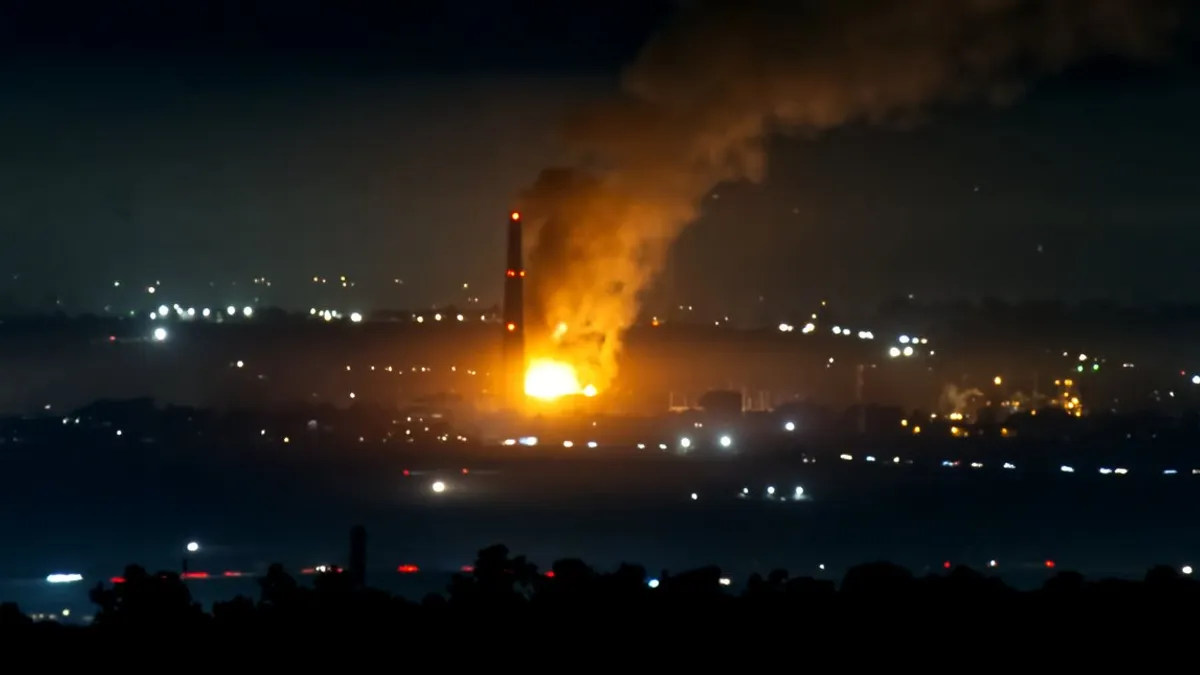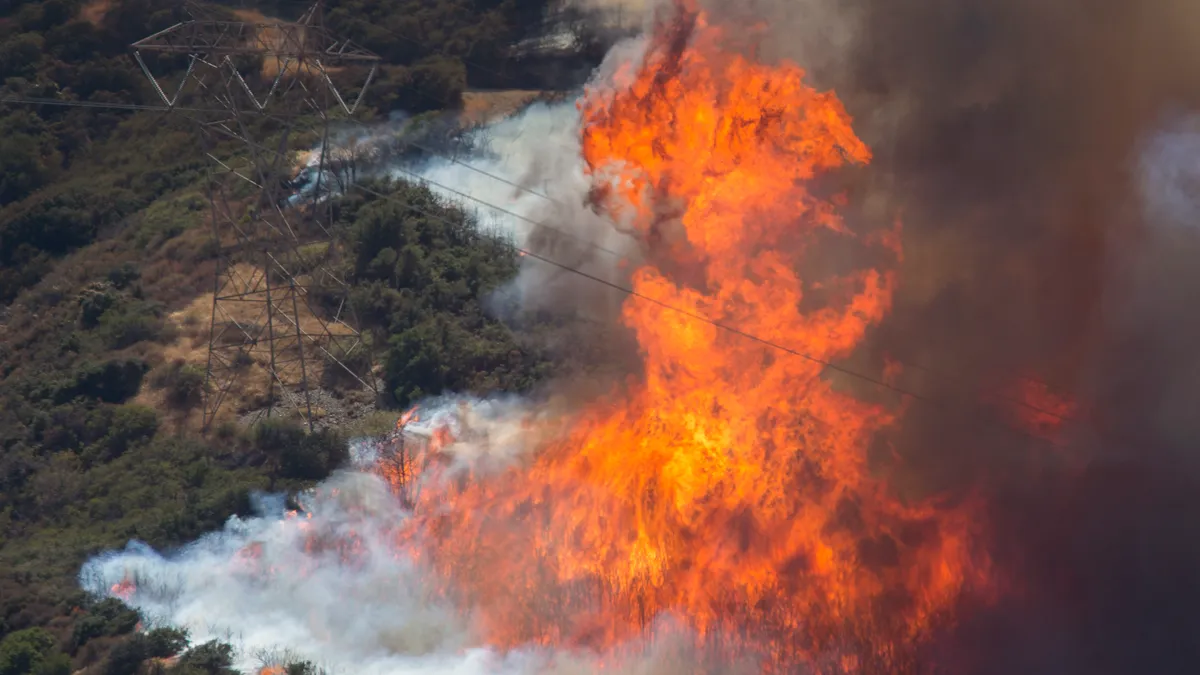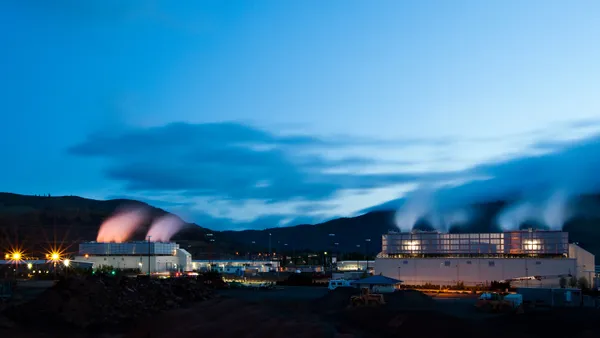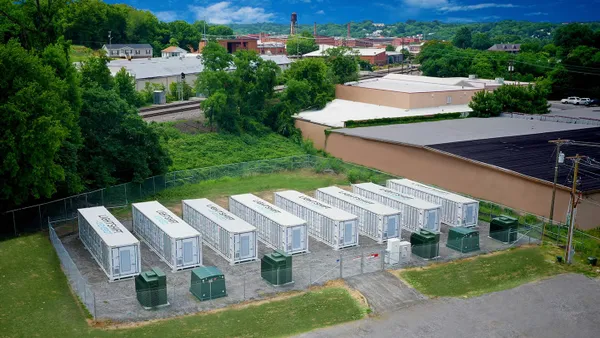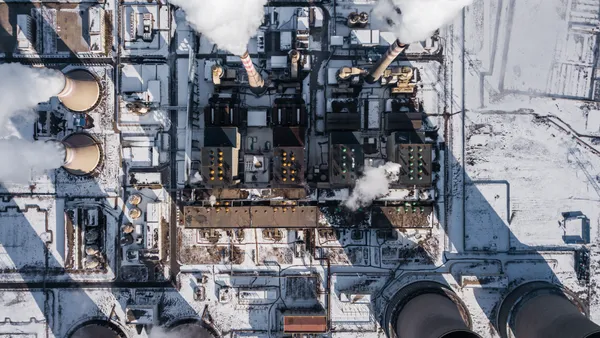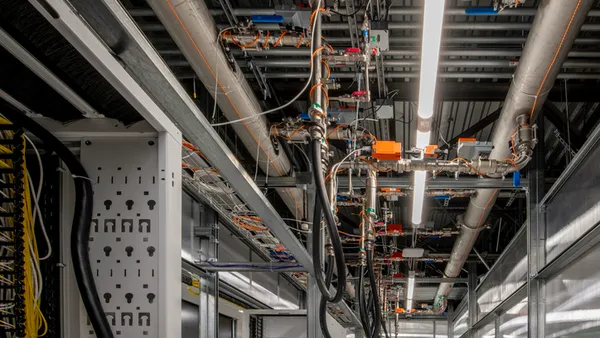Dive Brief:
- The dramatic fire that destroyed most of a 300-MW array at Vistra Energy’s 750-MW Moss Landing Energy Storage Facility late last week drew intense concern from local elected officials and may foretell closer scrutiny of utility-scale lithium-ion battery installations in California and nationwide.
- Monterey County Supervisor Glenn Church called the incident a “worst-case scenario,” comparing it to the partial meltdown at the Three Mile Island nuclear power plant in 1979, while California Assemblymember Dawn Addis, D, called for “transparency and accountability” and said she was “exploring all options for preventing future battery energy storage fires from ever occurring again on the Central Coast.”
- A spokesperson for the American Clean Power Association, a trade group that advocates for the energy storage industry, pushed back on comparisons to the Three Mile Island incident — cleanup of which took 12 years and cost $973 million — and said operational U.S. energy storage facilities had seen only 20 fire-related incidents in the past 10 years, despite energy storage deployment growing by more than 25,000% since 2018.
Dive Insight:
Fire broke out at Moss Landing around 3 p.m. local time Thursday and burned out of control through the night, with local newscasts showing flames shooting hundreds of feet into the air.
Officials closed nearby Highway 1, a major thoroughfare between Santa Cruz and the San Francisco Bay Area, and ordered about 1,200 residents to evacuate. The evacuation orders were lifted Friday evening as air quality monitors showed “no threat to human health,” officials said. No injuries or deaths were reported.
Though investigators have yet to determine the cause of the blaze, North County Fire Protection District Chief Joel Mendoza said Friday that a fire suppression system housed within one of the facility’s battery racks had failed, allowing the fire to spread. A Vistra spokesperson told CBS News that “an investigation will begin once the fire is extinguished.”
Church said in a Friday news conference that this was the fourth fire since 2020 on the property that houses Moss Landing and an adjacent 182.5-MW battery energy storage facility owned and operated by Pacific Gas & Electric. But the latest incident “does look and feel very different,” Addis added. Vistra, however, contends that two of the incidents were “overheating” and not fires.
The 300-MW battery array that burned is part of the 750-MW Moss Landing Energy Storage Facility, which occupies a decommissioned gas-fired power plant dating back to the 1950s. The retrofitted installation is among the less than 1% of U.S. energy storage facilities housing batteries indoors, American Clean Power Association spokesperson Phil Sgro said.
“Safety is the first and foremost priority of the industry and, after the incident is resolved and there is a thorough investigation, [it] will ensure the lessons learned are applied to prevent future incidents and inform safety standards and best practices,” Sgro said.
In July, ACP released a model ordinance framework for states and municipalities to develop regulations for energy storage system safety, permitting, siting, environmental compliance and decommissioning. The framework draws on the NFPA 855 fire safety standard and the UL 9540 and 9540A standards, which deal specifically with energy storage system safety.
Legislation signed in October 2023 by California Gov. Gavin Newsom, D, required battery energy storage facilities in the state to develop “an emergency response and emergency action plan” in coordination with local authorities. Assemblymember Addis co-authored the bill.
Tom Stepien, CEO of South 8 Technologies, said the energy storage industry “should also take a closer look at the fundamental building blocks of lithium-ion batteries and understand how we can make the cells themselves safer.”
Stepien’s company makes a proprietary gaseous electrolyte that “enables [lithium-ion] battery operation in extreme climates with reduced fire risk” compared with liquid electrolyte. The gas escapes compromised cells in seconds, reducing burn time and the corresponding risk of an adjacent cell igniting, he said.
The battery array that burned was commissioned in 2020, making it one of the oldest utility-scale battery installations of its size in California. Its vintage suggests it may not have been built to the strict fire safety standards supported by ACP, said Dustin Mulvaney, an environmental studies professor at nearby San Jose State University who studies energy storage systems. Mulvaney added that he did not have direct knowledge of the Moss Landing facility’s design or safety features.
“I would go and inspect any energy storage system that looks like this one,” Mulvaney said. “We should have a thorough inspection regime.”
Despite local officials’ alarm at the Moss Landing fire, Mulvaney said the incident is unlikely to set back the energy storage industry in California, noting a state-led siting option that limits local governments’ power to block new projects that incorporate community benefits agreements. Moving forward, energy storage developers may face stronger pressure from the insurance industry to follow strict fire safety standards, which could prove beneficial for the industry’s safety record and reputation in the long run, he said.
“If the industry figures it out, this could be the biggest battery fire that ever happens,” Mulvaney said.
Editor’s note: This story has been clarified to add Vista's characterization of the four incidents Supervisor Church mentioned as occuring at Moss Landing and the adjacent Pacific Gas & Electric battery energy storage facility.


